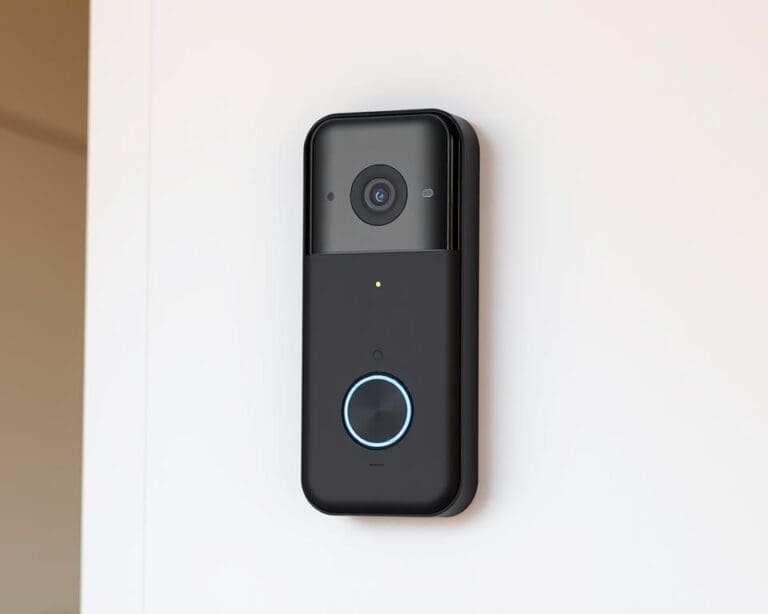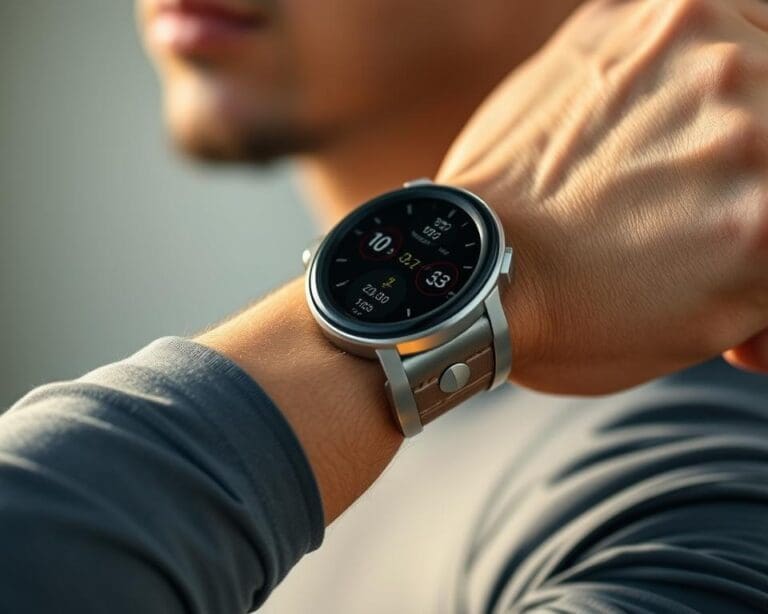In de snel evoluerende wereld van gezondheidstechnologie transformeert telemedicine de manier waarop patiënten en artsen met elkaar communiceren. Deze innovatieve benadering van virtuele zorg biedt niet alleen meer gemak en toegankelijkheid, maar ook de mogelijkheid om de gezondheidsresultaten te verbeteren. In dit artikel onderzoeken we hoe telemedicine de toekomst van medische consulten vormt, waardoor patiënten efficiënter en effectiever kunnen worden behandeld.
Key Takeaways
- Telemedicine biedt patiënten meer flexibiliteit en toegang tot zorg, vooral voor mensen in afgelegen of moeilijk bereikbare gebieden.
- Artsen kunnen dankzij telemedicine hun bereik uitbreiden en patiënten efficiënter monitoren en behandelen.
- Virtuele consultaties kunnen de kosten van de gezondheidszorg verlagen door onnodige ziekenhuisbezoeken te voorkomen.
- Technologische vooruitgang, zoals mobiele gezondheidsapps en geavanceerde apparaten, stimuleert de groei van telemedicine.
- Toekomstige ontwikkelingen in kunstmatige intelligentie en geavanceerde apparaten zullen telemedicine nog verder verbeteren.
Wat is telemedicine?
Telemedicine, ook wel bekend als virtuele zorg of afstandsgeneeskunde, is een opkomende trend in de gezondheidszorg. Het biedt patiënten de mogelijkheid om online medische consulten te hebben met hun zorgverleners, zonder fysiek naar een doktersbezoek te hoeven. Deze innovatieve vorm van zorgverlening maakt gebruik van technologie zoals videoconferenties, online patientportalen en digitale gezondheidsapplicaties.
Definitie en toepassingen
Telemedicine wordt gedefinieerd als het gebruik van elektronische communicatie en informatietechnologie om medische zorg op afstand te verlenen. Dit kan variëren van eenvoudige telefonische consulten tot geavanceerde telemonitoring waarbij patiënten hun vitale functies op afstand kunnen laten monitoren. Enkele toepassingen van telemedicine zijn:
- Videoconsulten met huisarts of specialist
- Opvolging van chronische aandoeningen via digitale gezondheidsapplicaties
- Op afstand beoordelen van diagnostische tests en beeldvorming
- Telerevalidatie en fysiotherarapie op afstand
Voordelen voor patiënten en artsen
Telemedicine biedt voordelen voor zowel patiënten als zorgverleners. Voor patiënten betekent het meer toegankelijkheid tot medische zorg, vooral voor mensen met mobiliteitsbeperkingen of die in afgelegen gebieden wonen. Daarnaast bespaart het reistijd en -kosten. Voor zorgverleners biedt telemedicine de mogelijkheid om efficiënter en flexibeler te werken, met betere monitoring van patiënten op afstand.
“Telemedicine stelt ons in staat om de kwaliteit van zorg te verbeteren en tegelijkertijd de kosten te verlagen. Het is een game-changer in de gezondheidszorg.”
– Dr. Emma Verhoeven, medisch directeur bij een grote zorginstelling
De opkomst van telemedicine
The healthcare industry has witnessed a remarkable surge in the adoption of telemedicine in recent years, driven by a confluence of technological developments and evolving healthcare needs. This digital transformation has been further accelerated by the COVID-19 pandemic, which has underscored the vital role of virtual care in maintaining access to medical services during challenging times.
Technological Advancements
The rapid progress in digital health technologies, such as mobile health apps and telemedicine platforms, has been a crucial factor in the rise of telemedicine. These innovations have enabled healthcare providers to offer a wide range of services remotely, from virtual consultations to remote patient monitoring, revolutionizing the way patients receive and engage with their care.
Changing Healthcare Needs
Alongside the technological breakthroughs, the healthcare landscape has witnessed a shift in patient preferences and expectations. Patients are increasingly seeking more convenient, accessible, and personalized care options, which telemedicine can readily provide. This demand for digital health solutions has been amplified by factors such as an aging population, the rise of chronic conditions, and the need for improved healthcare access, particularly in underserved or remote areas.
The convergence of these technological developments and evolving healthcare needs has paved the way for the rapid growth and widespread adoption of telemedicine, transforming the way patients and healthcare providers interact and collaborate in the delivery of care.
Artsen en telemedicine: De toekomst van medische consulten
Als de wereld zich steeds verder digitaliseert, is het geen verrassing dat ook de gezondheidszorg meegaat met deze trend. Telemedicine, of virtuele zorg, speelt een steeds grotere rol in de toekomst van medische consulten. Artsen omarmen deze technologische vooruitgang en zien de voordelen voor zowel henzelf als hun patiënten.
Een groeiend aantal artsen biedt online medische consulten aan, waarbij patiënten vanuit de comfortabele omgeving van hun eigen huis met hun zorgverlener kunnen communiceren. Dit biedt tal van voordelen, zoals tijdsbesparing, verbeterde toegankelijkheid en meer flexibiliteit voor patiënten. Bovendien kunnen artsen hun telemedicine-praktijk uitbreiden en meer patiënten bereiken.
De toekomst van medische consulten zal naar verwachting steeds meer virtuele zorg omvatten. Patiënten zullen hun artsen vaker online kunnen raadplegen voor eenvoudige klachten, diagnoses en opvolging. Tegelijkertijd zullen face-to-face bezoeken blijven bestaan voor complexere kwesties of voor wanneer fysiek onderzoek noodzakelijk is.
| Voordelen voor artsen | Voordelen voor patiënten |
|---|---|
|
|
Hoewel telemedicine de toekomst van medische consulten zal vormgeven, zal de persoonlijke interactie tussen arts en patiënt altijd een belangrijke rol blijven spelen. De integratie van virtuele zorg met traditionele zorgverlening zal de toekomst van medische consulten bepalen, waarbij de nadruk ligt op kwalitatief hoogwaardige en toegankelijke gezondheidszorg.
Vormen van telemedicine
In het tijdperk van digitale gezondheidszorg en mobiele gezondheidsapps, nemen virtuele medische consulten en op afstand monitoren van patiënten een prominente plaats in. Deze moderne vormen van telemedicine bieden talrijke voordelen voor zowel patiënten als artsen.
Videoconsulten
Videoconsulten stellen patiënten in staat om online medische consulten te hebben met hun arts, zonder de noodzaak om naar de kliniek te reizen. Deze interactieve videogesprekken maken het mogelijk voor artsen om patiënten te beoordelen, diagnoses te stellen en behandelingen voor te schrijven, allemaal vanuit de comfort van ieders eigen omgeving. Videoconsulten verbeteren de toegankelijkheid tot zorg, vooral voor patiënten die mobiliteitsproblemen of andere belemmeringen ervaren om fysiek naar de praktijk te komen.
Telemonitoring
Telemonitoring geeft artsen de mogelijkheid om patiënten op afstand te monitoren door middel van draagbare apparaten en mobiele gezondheidsapps. Patiënten kunnen hun vitale functies, zoals bloeddruk, hartritme en glucosewaardes, thuis meten en deze gegevens draadloos naar hun arts verzenden. Deze continue monitoring stelt artsen in staat om tijdig in te grijpen en veranderingen in de gezondheidstoestand van de patiënt op te merken, wat leidt tot verbeterde zorguitkomsten en minder ziekenhuisopnames.
Zowel videoconsulten als telemonitoring vormen essentiële onderdelen van de opkomende digitale gezondheidszorg, waarbij technologie wordt ingezet om de toegankelijkheid, efficiëntie en kwaliteit van medische zorg te verbeteren.
Uitdagingen en obstakels
While the rise of telemedicine, virtual care, and online medical consultations has brought numerous benefits to both patients and healthcare providers, there are still significant challenges and obstacles that need to be addressed.
One of the primary concerns is the technological barrier that some patients may face, particularly the elderly or those living in remote areas with limited access to reliable internet connectivity. Ensuring that all patients can seamlessly access and navigate telemedicine platforms is crucial for equitable care delivery.
Another obstacle is the regulatory and legal landscape, which can vary significantly across different regions and jurisdictions. Healthcare providers must navigate a complex web of regulations, licensing requirements, and insurance reimbursement policies to offer virtual care services legally and effectively.
Additionally, patient privacy and data security are significant concerns that must be addressed. Patients need to feel confident that their sensitive medical information is being handled securely and in compliance with data protection laws.
| Challenges | Obstacles |
|---|---|
| Technological barriers | Regulatory and legal hurdles |
| Patient digital literacy | Reimbursement policies |
| Privacy and data security | Lack of patient trust |
To overcome these challenges and obstacles, healthcare providers must work closely with policymakers, technology experts, and patient advocacy groups to address these issues and ensure that telemedicine and virtual care services are accessible, secure, and responsive to the needs of all patients.
Juridische en ethische overwegingen
Als telemedicine verder ingeburgerd raakt, moeten juridische en ethische kwesties zorgvuldig worden aangepakt. Privacy en gegevensbescherming zijn cruciaal bij het uitvoeren van virtuele consulten en het monitoren van patiënten op afstand. Tegelijkertijd moeten professionele standaarden worden ontwikkeld om de kwaliteit van de zorg te waarborgen.
Privacy en gegevensbescherming
Patiënten moeten erop kunnen vertrouwen dat hun medische gegevens veilig en vertrouwelijk worden behandeld, ongeacht of de zorg fysiek of op afstand plaatsvindt. Aanbieders van telemedicine moeten strikte protocollen en beveiligingsmaatregelen implementeren om de privacy en gegevensbescherming van patiënten te beschermen.
Professionele standaarden
Artsen en andere zorgverleners moeten professionele standaarden naleven bij het verlenen van virtuele zorg. Dit omvat richtlijnen voor diagnose, behandeling, communicatie en follow-up. Duidelijke standaarden zijn essentieel om de kwaliteit, veiligheid en effectiviteit van telemedicine te waarborgen.
| Juridische overwegingen | Ethische overwegingen |
|---|---|
|
|
De juridische en ethische uitdagingen moeten zorgvuldig worden aangepakt om het volledige potentieel van telemedicine te benutten en patiënten de best mogelijke zorg te bieden, ongeacht de locatie.
Integratie in de gezondheidszorg
As the healthcare industry continues to evolve, the integration of telemedicine has become a crucial component in delivering comprehensive and accessible care. This integration process involves the seamless collaboration between healthcare providers and the effective education of patients to ensure the successful adoption of virtual care services.
Collaboration Between Healthcare Providers
Successful integration of telemedicine relies heavily on the cooperation and coordination among healthcare providers. Providers must work closely to develop standardized protocols, share best practices, and ensure consistent patient experiences across various virtual care platforms. By fostering this level of collaboration, healthcare systems can maximize the potential of telemedicine, streamlining operations and improving patient outcomes.
Patient Education and Engagement
Alongside provider collaboration, patient education plays a pivotal role in the integration of telemedicine. Patients must be informed about the benefits of virtual care, such as improved access to providers, reduced travel time, and the convenience of remote consultations. Comprehensive patient education programs, facilitated by both healthcare providers and telemedicine services, can empower patients to actively participate in their own care and embrace the full potential of telemedicine.
By seamlessly integrating telemedicine into the healthcare ecosystem, leveraging provider collaboration and patient engagement, the future of virtual care services can be realized. This holistic approach ensures that the integration of integratie gezondheidszorg, samenwerking providers, and patiënteneducatie enhances the delivery of telemedicine and virtuele zorg for all patients.
Toekomstige ontwikkelingen
As the field of telemedicine continues to evolve, the future holds exciting possibilities driven by the advancements in kunstmatige intelligentie and geavanceerde apparaten. These emerging technologies are set to transform the landscape of digital healthcare, delivering more personalized and efficient virtual care experiences for both patients and healthcare providers.
Kunstmatige intelligentie: De sleutel tot slimmere gezondheidszorg
The integration of kunstmatige intelligentie (KI) into telemedicine platforms will enable more precise diagnosis, personalized treatment recommendations, and enhanced patient monitoring. KI-powered virtual assistants can analyze patient data, identify patterns, and provide real-time insights to healthcare professionals, allowing them to make more informed decisions and deliver more effective telemedicine services.
Geavanceerde apparaten: De toekomst van digitale gezondheidszorg
The rapid development of geavanceerde apparaten, such as wearable health monitors, remote patient monitoring devices, and smart home technologies, will revolutionize the way healthcare is delivered. These cutting-edge devices will empower patients to take a more active role in managing their own health, providing healthcare providers with valuable real-time data to optimize toekomstige ontwikkelingen in telemedicine.
| Technologie | Toepassingen in telemedicine | Voordelen voor patiënten en zorgverleners |
|---|---|---|
| Kunstmatige intelligentie | – Geautomatiseerde diagnose en behandelingsaanbevelingen – Geavanceerde patiëntmonitoring en vroegtijdige detectie van gezondheidsproblemen |
– Snellere en nauwkeurigere behandeling – Betere zorgresultaten en toegankelijkheid |
| Geavanceerde apparaten | – Thuismonitoring van gezondheidsparameters – Real-time gegevensoverdracht naar zorgverleners |
– Verbeterde zelfzorg en betrokkenheid van patiënten – Efficiëntere zorgverlening op afstand |
Naarmate deze technologieën verder worden ontwikkeld en geïntegreerd in de telemedicine-sector, zullen patiënten en zorgverleners profiteren van een toekomst waarin de grenzen tussen fysieke en digitale gezondheidszorg vervagen. De toekomstige ontwikkelingen in kunstmatige intelligentie en geavanceerde apparaten beloven een nieuw tijdperk van slimmere, efficiëntere en meer toegankelijke digitale gezondheidszorg.
Conclusie
As we’ve explored throughout this article, telemedicine is poised to play a pivotal role in the future of medical consultations. The rapid advancements in technology, coupled with evolving healthcare needs, have paved the way for a more accessible, efficient, and personalized approach to virtual care. Patients and healthcare providers alike are reaping the benefits of telemedicine, from reduced travel time and increased convenience to enhanced patient engagement and improved outcomes.
Looking ahead, the integration of cutting-edge technologies, such as artificial intelligence and advanced monitoring devices, will further revolutionize the way we think about and deliver healthcare. By streamlining the diagnostic process, automating administrative tasks, and providing real-time data insights, these innovations will empower clinicians to make more informed decisions and deliver more personalized treatment plans.
As the healthcare industry continues to embrace the transformative potential of telemedicine, it will be crucial to address the challenges and ethical considerations that come with this shift. Ensuring patient privacy, maintaining professional standards, and fostering seamless collaboration between providers will be essential in building a robust and trustworthy virtual care ecosystem. With the right strategies and a patient-centric approach, the future of medical consultations is poised to be more accessible, efficient, and responsive to the evolving needs of individuals and communities.












